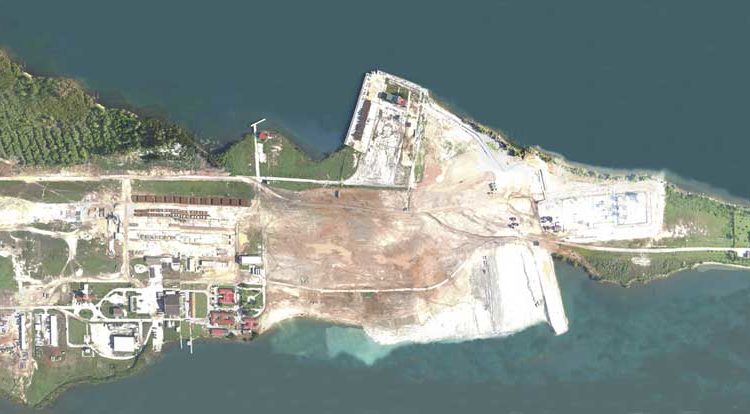Centuries ago, when voyagers and geographers ventured to name the island of Cuba the “Key to the Gulf of Mexico”, they never imagined the role that the Bay of Mariel would come to play in the 21st century to justify that designation. Located 28 miles east of Havana, the Port of Mariel is expected to become the most modern and important industrial port in the country and in the Caribbean region.
The Zona de Desarrollo Integral de Mariel, a joint venture between the Odebrecht Group, the largest engineering and construction firm in Brazil, and a Cuban developer, has overseen since 2010 the construction of a Special Development Zone of over 150 square miles. By 2022, Mariel is expected to boast a terminal that is 1.2 miles long, capable of handling even the largest vessels in the world; a new container terminal, a general cargo and bulk foods terminal, logistics for oil exploration and development, and light industry production in the Special Development Zone adjacent to the port.
It is expected to handle up to one million containers a year, compared to the 350,000 that are currently handled at the Port of Havana.
Brazil’s National Development Bank (BNDES) has committed $800 million to finance construction of the infrastructure and port facilities, making the Mariel project the largest Brazilian investment in Cuba.
Port operator PSA International won the bid to manage the new terminal and container port. The Singapore-based company operates numerous ports around the world, including installations in Panama and Argentina.
When the Mariel project is completed, Cuba will have infrastructure that will be functional for the rest of the century. It will be connected to existing highway and railway networks, ensuring the movement of cargo that comes into the port, and will be supported by other networks to provide energy, water supply and management, communications and other utilities, all designed using principles of sustainable development.
The project employs some 2,000 workers from the province of Artemisa as engineers, operators, welders and construction workers and others. They are also building housing, schools and healthcare facilities for the new communities of port, industrial, construction and service workers who will be employed in the new development zone. The city also plans to open a technical school to provide training in the various specialties that will be required by the most modern port in the country.
Among the most complex tasks currently being undertaken is the dredging of the bay, which will allow the terminal to accommodate deeper draft vessels — up to 49 feet compared to the 36-foot maximum that is currently supported at the Port of Havana.
The terminal is expected to start limited operations in 2013 while construction continues, to coincide with the expansion of the Panama Canal in 2014, which will permit the passage of large vessels coming from Asia. Initially, Mariel will have a berth 765 yards long, allowing it to handle up to two large ocean vessels simultaneously. The project includes an area for containers, warehouses, cold storage, fuel supply, food provision and other marine services.
Cuba aspires to become a regional cargo logistics center. In the future it will be capable of receiving deep draft vessels with goods for consumption in Cuba and for transshipment to other ports in the Caribbean and Latin America. Mariel is the northernmost port in Cuba, making it ideal to handle cargo to and from the United States when that nation lifts its embargo on trade with this island.
Mariel is expected to take over the operations of the Port of Havana, where most port and industrial operations will be shut down, including the old power plant and oil refinery. It will become a harbor used principally for tourism and passenger transportation.
The “Key to the Gulf of Mexico” has evolved and its role has changed continuously in the half-millennium since this island became known to the rest of the world. Nevertheless, its ports and coastal areas continue to be valuable resources for Cuba and key to its development. The changes that the Port of Mariel will undergo in the coming years are a prime example.










